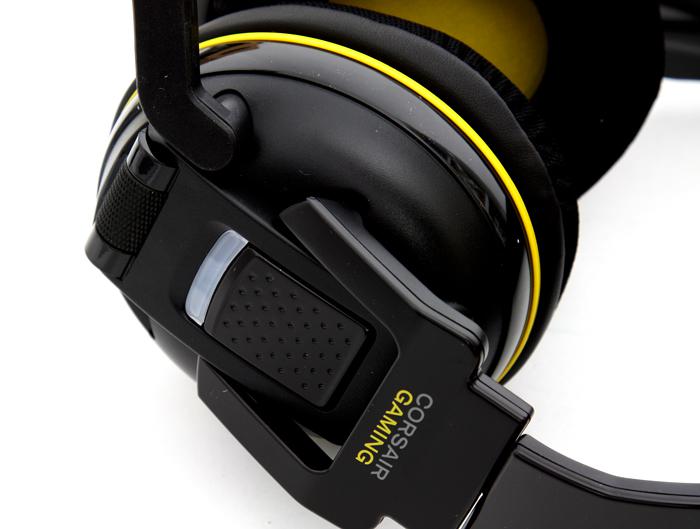Showcase
The H2100 comes with nice big 50mm drivers which deliver a lot more volume with very little distortion in bass. In comparison, the Sennheiser HD800 has 56mm drivers and a 40mm voice coil (because the technology is rather different, it's hard to call Sennheiser drivers, 'drivers'), so the Vengeance and Corsair Gaming 2100 are getting up there though.
The earcups on the H2100 are big and padded similar to the 1500 and 2000 with quite a bit of adjustment for comfort. Overall comfortable.
The headband on the 2100 is fairly similar to the H1500 and the V2100. So that boils down to big and padded, but with little extra touches like the yellow thread sewing. Differences over previous generations can be found in the design of the headband, whose hinges/swivel points have been redesigned to be much more hard-wearing. The ear cups can be rotated completely so they'll adjust themselves perfectly to the shape of your head or oddly shaped head :)
Typically we do have a slight aversion to the USB chips in headsets. We feel they hurt sound more than they should, but Corsair knows this and is using higher quality USB chips in their headsets. The Vengeance 2100 headset uses, we assume, the C-Media CM6302. The boom microphone thankfully rotates away up and down, but isn't adjustable other than that. The MIC is noise-cancelling, and well talk to it and about that as well later on.
If it is the IC used then that is good, the C-Media CM6302 is a compelling audio chip, up to 16-bit, in 44.1 KHz or 48 KHz sample rates, DAC for output, and 16-bit, 44.1 KHz and 48 KHz ADC (analog-to-digital conversion) for the microphone. This chip also integrates a DSP that enables Dolby Digital technologies. Overall the H2100 is stylish, simple, even elegant in a minimalist sort of way. Here we see the USB cable connector for charging the headset. To the top left is the on/off switch with below it a blue LED that will emit light when powered on. The metal round knob will allow you to control volume.






